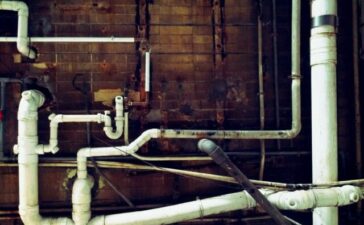It’s easy to take the security of our homes for granted. We often think of our property as a safe and secure place, where we and our loved ones are protected from the outside world. But sometimes, even the most seemingly safe places can be vulnerable to accidents or crime. That’s why it’s important to take some time every now and then to check your home for safety hazards and fix them before they become a problem. Let’s explore some of the most common safety hazards in the home, as well as expert tips on how to fix them.
Proper Roofing and Gutters
One of the most important parts of keeping your home safe is making sure that your roof and gutters are in good condition. If your roof is old or in disrepair, it could collapse and seriously injure anyone inside. Similarly, if your gutters are full of debris, they can cause water to back up and flood your home. To avoid these problems, have your roof checked by a professional every few years, and make sure to clean your gutters regularly. As for new roofing, you can learn everything you should know from unified home remodeling and get a better understanding of the potential costs and requirements. Some common rules when it comes to roofing are as follows:
- Make sure your roofing contractor is licensed and insured.
- Get at least three estimates before hiring a contractor.
- Be sure to get a written contract that includes all the details of the project, including a payment schedule.
- Do not make a final payment until the job is completed to your satisfaction.
Electrical Hazards
Another common safety hazard in the home is electrical problems. Faulty wiring can lead to electrical fires, which are some of the most devastating and deadly fires there are. To avoid this, have your home’s wiring checked by a professional every few years, and be sure to replace any old or frayed wires immediately. You should also be careful not to overload your electrical outlets, and never use extension cords as a permanent solution. If you have any questions about your home’s electrical system, contact your local electrician or power company.
Water Hazards
Another hazard that is often overlooked is the risk of water damage. Water leaks can lead to serious problems like mold and mildew, which can cause respiratory problems and other health issues. To avoid this, make sure to check all the plumbing in your home regularly for leaks, and have any repairs made immediately. You should also be aware of the signs of water damage, such as stains on walls or ceilings, peeling paint, or musty odors. If you notice any of these, don’t hesitate to call a professional to have the problem fixed.
Fire Hazards
Of course, one of the most common hazards in any home is the risk of fire. Fires can start quickly and spread rapidly, destroying everything in their path. To avoid this, be sure to have working smoke detectors in your home, and test them regularly. You should also create and practice a fire escape plan so that everyone in your family knows what to do in case of a fire. Finally, be careful with dangerous items like candles and lighters, and never leave them unattended. For example, always blow out candles before you leave the room, and never leave lighters or matches where children can reach them.
CCTV and Alarm Systems
Finally, one of the best ways to keep your home safe is to install a CCTV system. A CCTV system will allow you to monitor your property at all times, day or night. This can be a great deterrent to burglars and other criminals, as they will know that they are being watched. You can also use your CCTV system to keep an eye on your kids or pets while you’re away from home. In addition to CCTV, you may also want to consider installing an alarm system. An alarm system can alert you (and the police) if someone breaks into your home, even if you’re not there. This can give you peace of mind knowing that your home is protected even when you’re not there.
Following these expert tips will help to make sure your home is safe to live in. Make sure to also have working smoke detectors and a fire escape plan in place, and be sure to practice them regularly. By taking these precautions, you can help to ensure that your home is a safe and comfortable place for your family to live.







